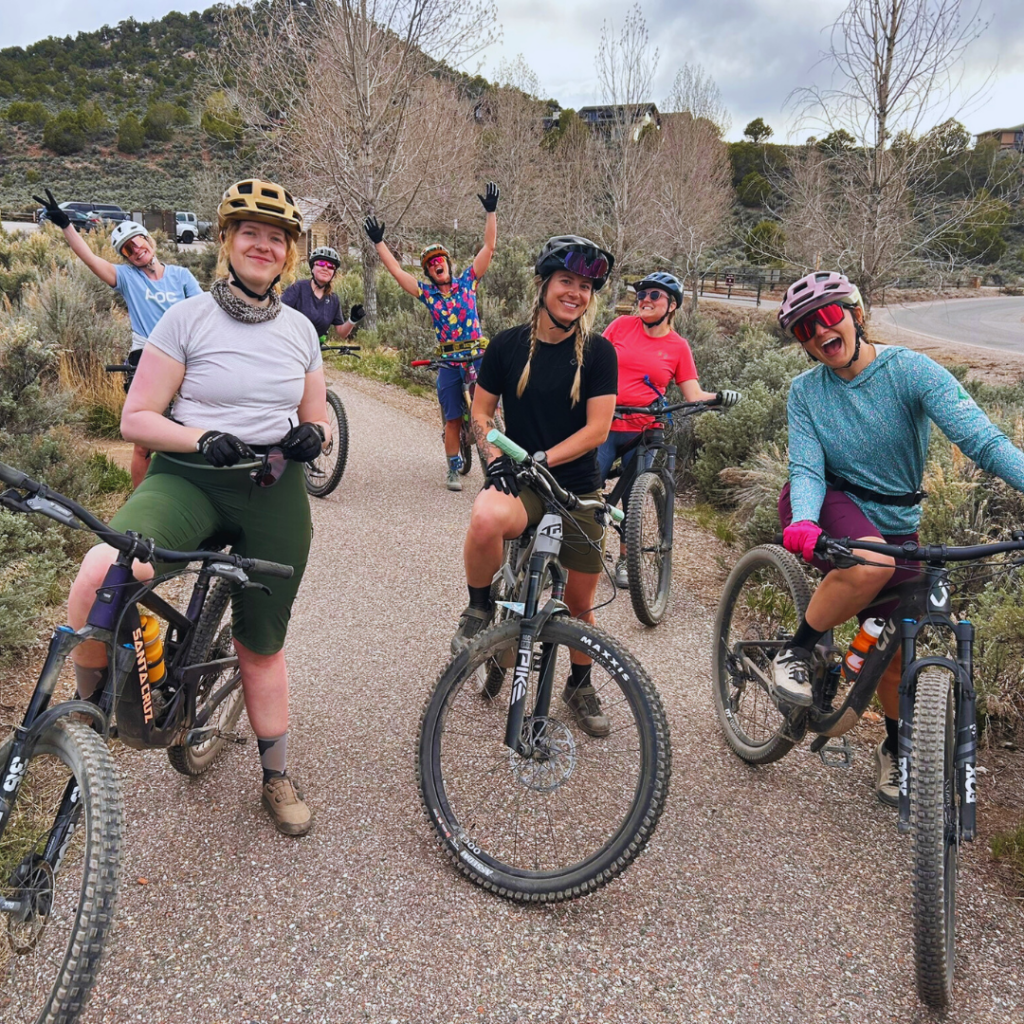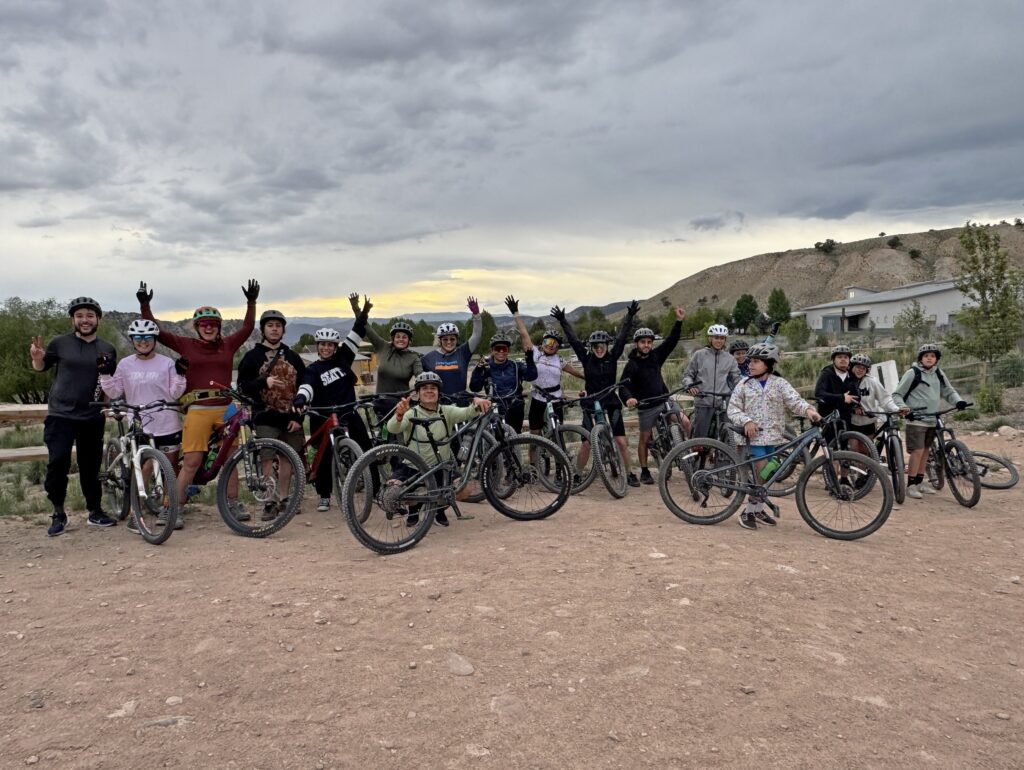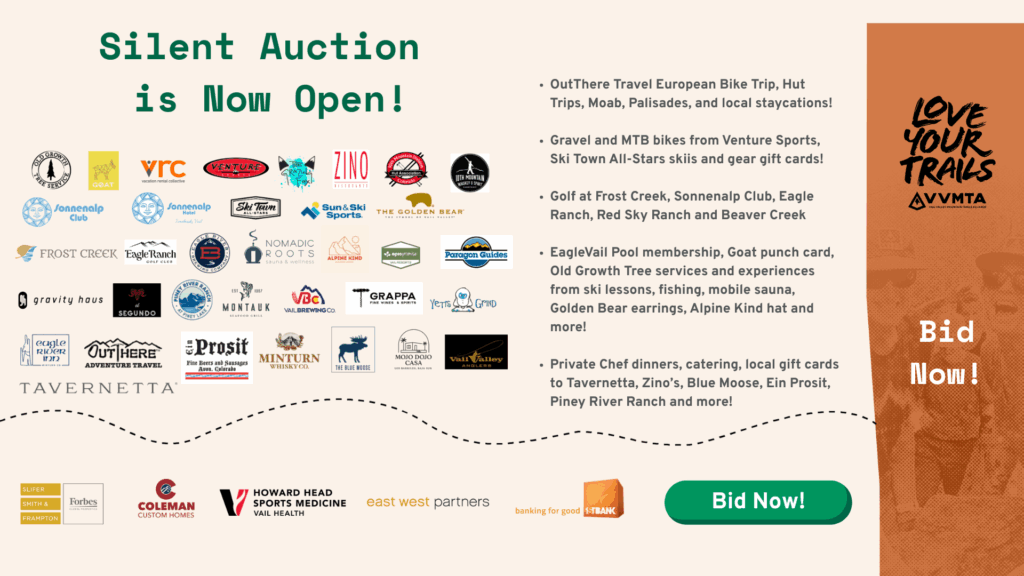Financial Barriers: Hidden Costs, Real Impact
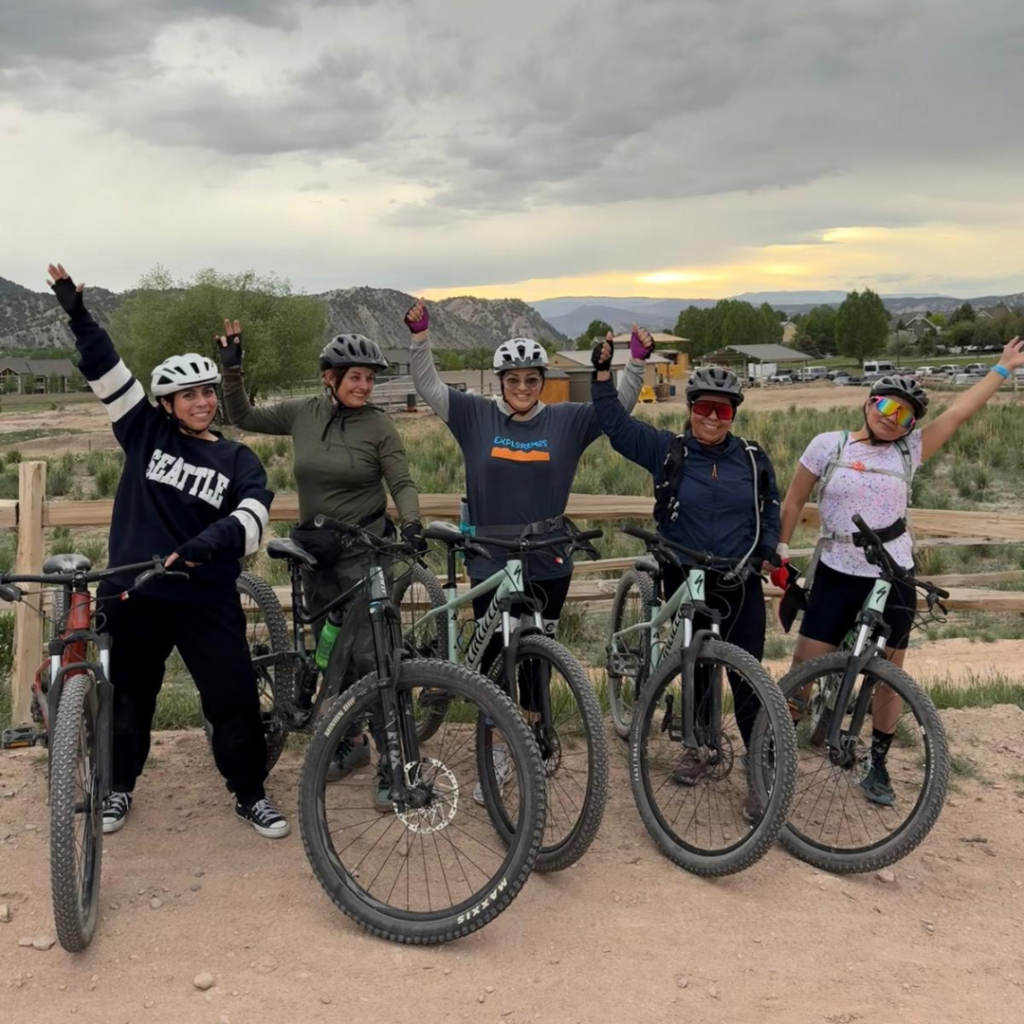
Recreating outside can be expensive. While we often think about the big-ticket items like bikes, skis, or hiking gear. But the hidden costs like usage fees, transportation, time off work, and even childcare, can be just as limiting.
To help ease this burden, a number of programs in the Vail Valley are stepping up. One local organization, Exploremos, has worked hard to create a free, community gear closet. VVMTA’s fleet of mountain bikes and helmets is available for participants in Soul Dirt rides, and we too have backpacking gear available for users, removing a major barrier to participation in overnight trips.
Cultural Barriers: Language, Representation, and Belonging
Outdoor culture hasn’t always been inclusive. When people don’t see themselves represented in trail media, programs, or leadership, it sends a message that they don’t belong. Representation matters. When you see people like you out on the trails, you’re more likely to feel like you belong there too.
That’s why VVMTA is working to ensure our programs reflect the communities we serve. Our programs for the Hispanic community are conducted in Spanish, creating a space where Spanish-speaking participants can learn new skills, connect with nature, and build community, all in the comfort of their native language.
We’re also committed to improving language accessibility beyond programming. Our website is available in both English and Spanish, and we’re currently working on installing bilingual trail signage throughout Eagle County to ensure all trail users feel welcome and informed.
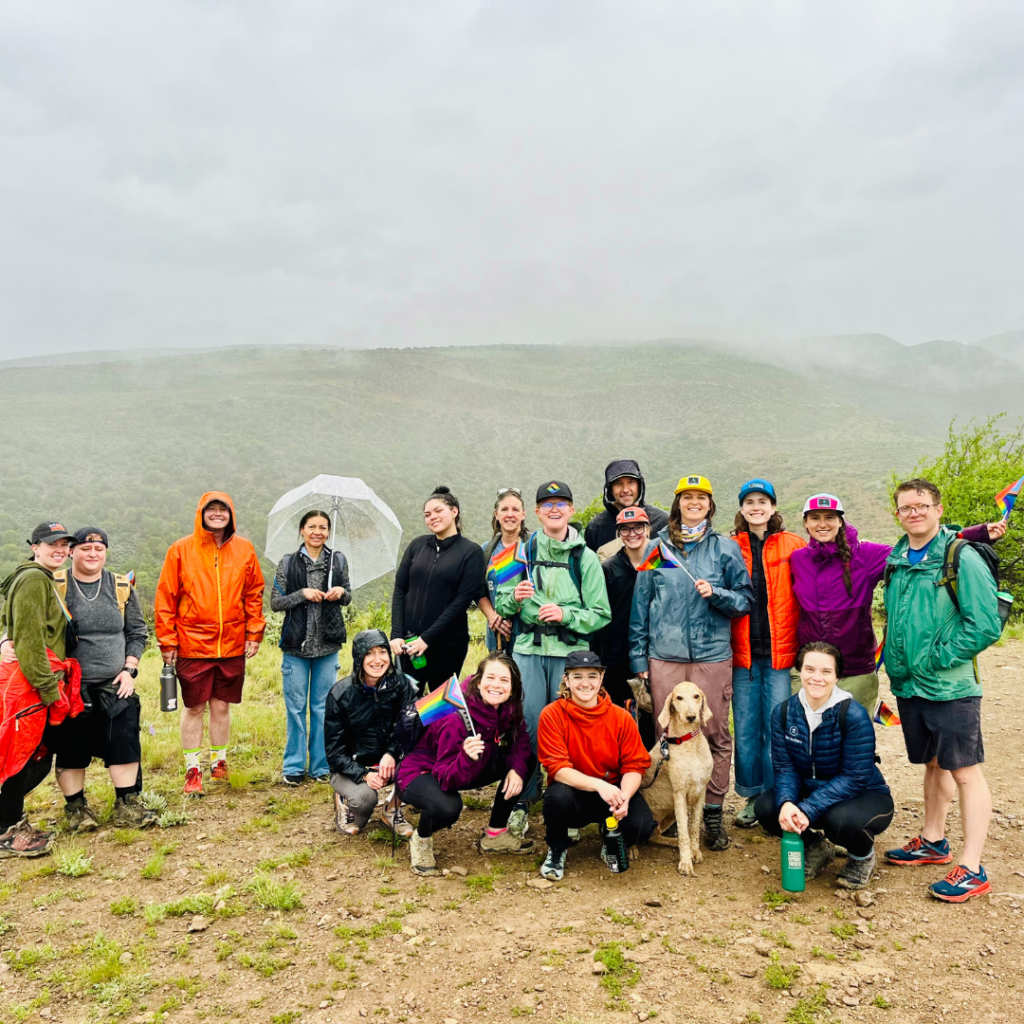
Geographic Barriers: Access Starts with Proximity
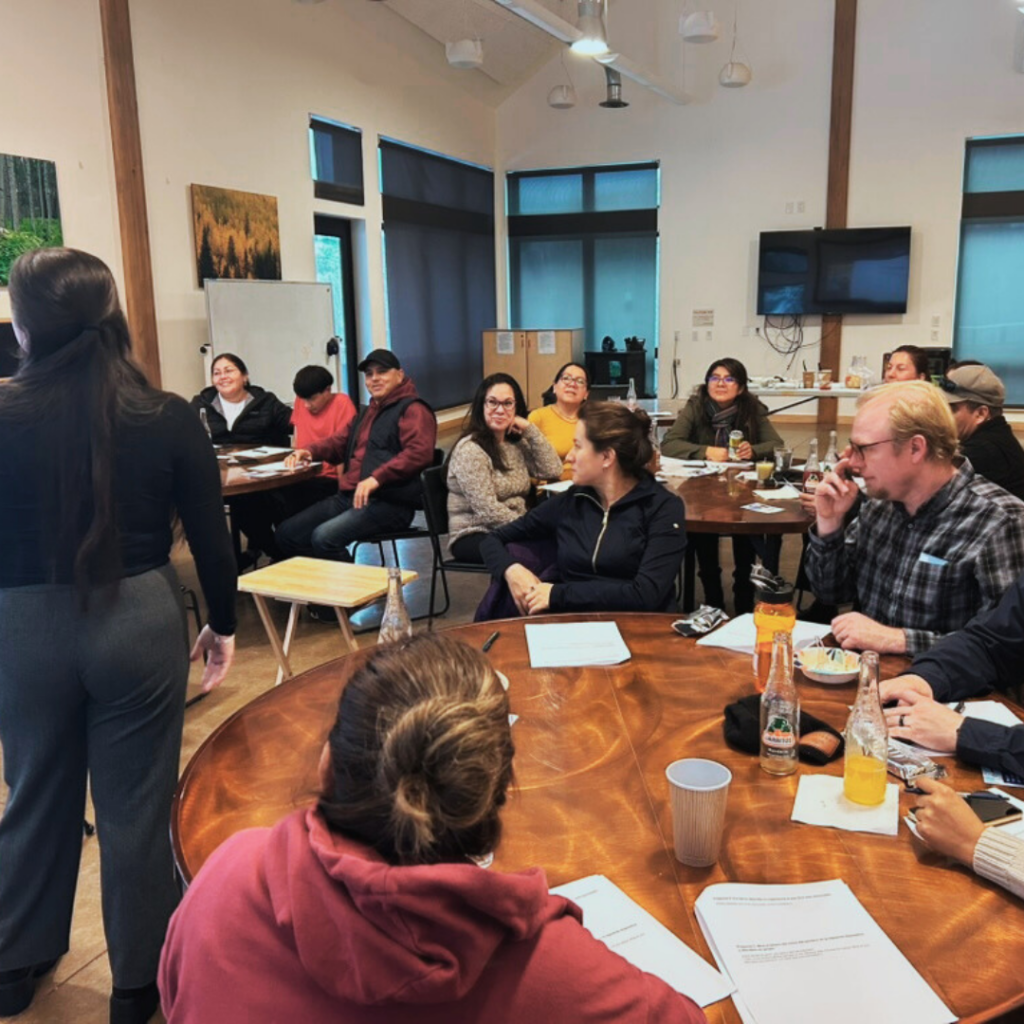
Finally, we must recognize that not every community in Eagle County has the same access to trails. Down-valley neighborhoods often lack trailheads within walking or biking distance, and limited transportation options make it hard to reach other recreation areas. As one Gypsum Creek Middle School student put it, “Please help us build trails in Gypsum so we don’t have to drive to Eagle and we can spend more time on the trails.” This simple request highlights a larger truth: when access is limited, opportunities for outdoor connection and movement are, too.
We believe that trail access should not depend on your zip code. That’s why we’re advocating for more trails in underserved areas and working with local partners to expand existing trail networks and build new ones, too.
Looking Forward
Equity in outdoor recreation doesn’t mean offering the same experience to everyone—it means ensuring that each person has what they need to participate fully, safely, and confidently. At VVMTA, we’re proud to be part of a growing movement to make trails more accessible and inclusive.
There’s still work to be done. But with community support, strong partnerships, and a shared vision for inclusion, we’re building a future where everyone can find their place on the trail. So, what can you do to help? Equity in outdoor recreation is a community effort. Whether you can give your time, your voice, or your resources, you have a role to play in opening up access to our trails. When we come together, trails become more than places to ride or hike—they become spaces of belonging.
– Anna Bidstrup, Soul Dirt Coordinator
